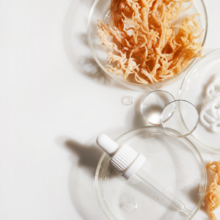Starbucks Diet: Healthy or Not?
- Published: Tuesday, October 23rd 2012
- in Nutrition
By Vanessa Voltolina
 Ever eyed those boxed meals featuring cheese, bread and fruit at Starbucks? (We have.) They’re right below the calorie-laden baked goods and somewhere around the canned drinks.
Ever eyed those boxed meals featuring cheese, bread and fruit at Starbucks? (We have.) They’re right below the calorie-laden baked goods and somewhere around the canned drinks.
While Starbucks has a reputation for keeping the masses on the go with its caffeinated creations, recently one woman has been singing this coffee chain’s praises for another reason—weight loss.
Sixty-six year old Christine Hall claims to have lost 85 pounds by eating all of her meals at a local Starbucks. More specifically, Starbucks’ prepackaged foods make up breakfast, lunch and dinner, and allow Hall to keep track of her daily caloric intake from the nutritional info labels. A typical menu includes oatmeal and a black coffee (145 calories) and either a “bistro box” or panini for lunch and dinner (around 220-460 calories per meal).
Based on Hall’s success, does this mean that it’s healthy for you to go ’bucks wild for a smaller waistline? No, says Dr. Michael A. Fiorillo of Luminique MedSpa in New York City.
Hall is consuming “a very small amount of calories,” Fiorillo says. Even at the upper end of the calorie spectrum, Hall was only eating around 1,000 calories per day; many nutritionists and health experts recommend females stay at or above 1,200 calories, and men take in no fewer than 1,800 calories daily.
Due to the surprisingly low calorie count, it’s no wonder that Hall shed some serious weight. While this may be a selling point initially, it doesn’t make this diet healthy or sustainable in the long run. “There aren’t enough options,” Fiorillo says.
The Takeaway
 While the Starbucks panini/bistro box diet isn’t healthy for an extended period of time (or easy on your wallet!), there are takeaways from Hall’s experience that may help kick start weight loss.
While the Starbucks panini/bistro box diet isn’t healthy for an extended period of time (or easy on your wallet!), there are takeaways from Hall’s experience that may help kick start weight loss.
“The pros [of Hall’s Starbucks diet] are that she was consistent, and it was easy to follow,” Fiorillo says. These are two very important tenets for dieters. Overly complex plans become frustrating, with dieters ditching them before they can see results. And keeping up the healthy meals and daily exercise on a consistent basis is key, says Fiorillo. Track your meals by writing them down, and hold yourself accountable for exercise and healthy eating.
One big downside to this Starbucks diet: “[Hall] is not getting all the nutrients that she needs,” says Fiorillo. “I like eating six small meals a day. You need a good balance of proteins, carbs and fats.” He suggests Hall increase her daily intake of fruits, vegetables and whole grains, and eat higher portions of carbs before noon to give the body the day to burn off calories.
Another recommendation? “Have a cheat meal once a week,” Fiorillo adds.
We like that suggestion. Starbucks Frappuccino, anyone?
Images courtesy of Starbucks Corporation.


